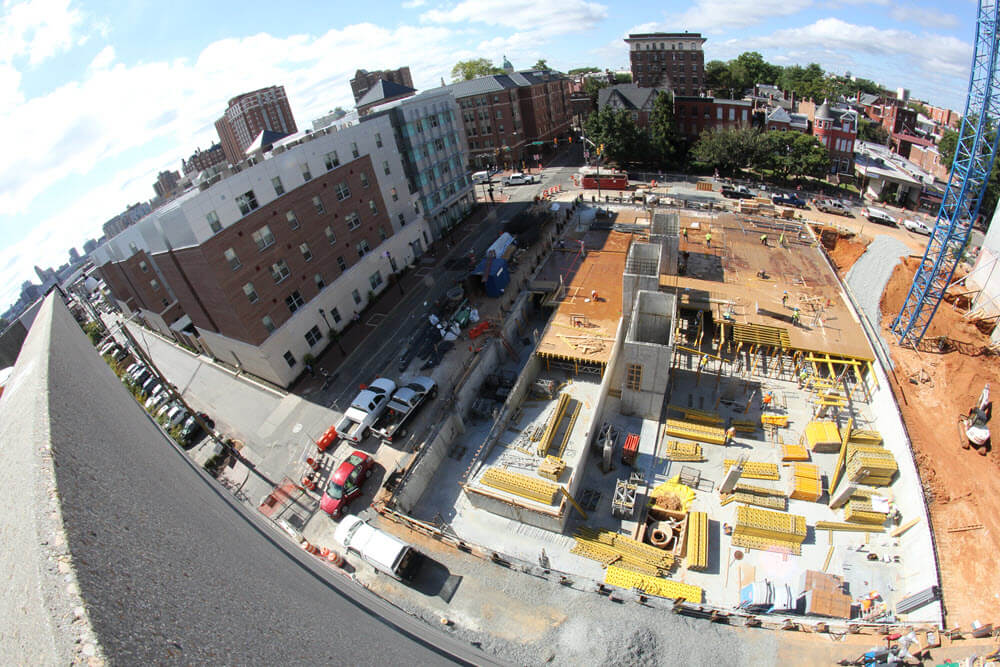Multifamily’s Share of Total Residential Permits Decreasing

Multifamily permits for properties of five or more units comprised 33.7% of all residential building permits in August 2017. That percentage represented a decline from two years earlier.
Multifamily’s share of total residential building permits in 2015 was at its highest level since the early 1970s. The 38.2% nationwide in August 2015 was still lower than its upper range average of about 45% from 1968-1974, but more than three times higher than its low of 12.3% set in 1993. The ratio can grow or fall depending on whether multifamily permits increased or decreased compared to single-family, or vice versa.
The chart below depicts annual multifamily permit levels by month on a rolling 12-month average from 1961-present, along with the multifamily’s share of total residential permits.

Multifamily’s share of total residential permits has declined to 33.7% since 2015, a 5-percentage-point drop in the past two years. However, the chart shows that the level of multifamily permitting has remained close to an annual average of about 415,000 units since mid-2016.
What has changed is the level of single-family permitting, as it climbs back from the devastating effects of the housing bubble burst. Single-family permitting, while still trailing historical average levels of more than 880,000 units annually, are climbing and broached the 800,000 annual-average level in August 2017. This compares to the peak single-family permitting level of 1.69 million units permitted at the height of the housing bubble in 2006.
It is also clear from the chart that while the volume of multifamily permitting has leveled off, the number of units permitted and multifamily’s share of total residential permits may have peaked in 2015. The unusual peak in the ratio in 2008-2009 is the result of the overshoot between multifamily permits that take longer to start and build, and the sharp pullback in single-family permitting resulting from the housing bubble bust. Otherwise, the percentage timeline tends to mirror the level of annual average multifamily permits.
The following chart graphically represents multifamily’s share of total residential permits ratio for the U.S. and the top five metro multifamily-permitting metros as of August 2015.

The top four metros were the same in August 2015 as they were in August 2017, and in the same order. Only Houston dropped out of the top five in the intervening two years, primarily because of the aftereffects of the severe drop in oil prices and its resulting impact on the Houston economy.
Two years ago, these top five metros were at or near 23-year peak ratio levels as apartments (and to a lesser degree, condominiums) comprised a significant share of total residential construction. The peaks are evident compared to the line demarking the year 2015 in the chart. Houston’s peak year was in 2014 when the oil price plunge occurred.
As mentioned before, up or down movement in the percentage could be a combination of increasing/decreasing single-family and/or multifamily permits. In 2015, most of the top five metros were experiencing increasing multifamily permitting and weak but growing single-family permitting. One exception was New York, where the surge in multifamily permitting was caused by the 421-a Property Tax Exemption Program deadline situation, as well as a dearth of single-family permitting.
Returning to the original question: what has changed since 2015? Multifamily permitting declined in four of the top five permitting metros by 6%-74%… Only Dallas permitted about the same as two years ago.
Not surprisingly, the steepest declines were in Houston (-73.7%) and New York (-49.4%). Metros without a supply-side shock (New York) or demand-side shock (Houston) have seen moderate declines in their multifamily share of total residential permits as single-family market conditions have improved and demand for multifamily products has remained strong.






